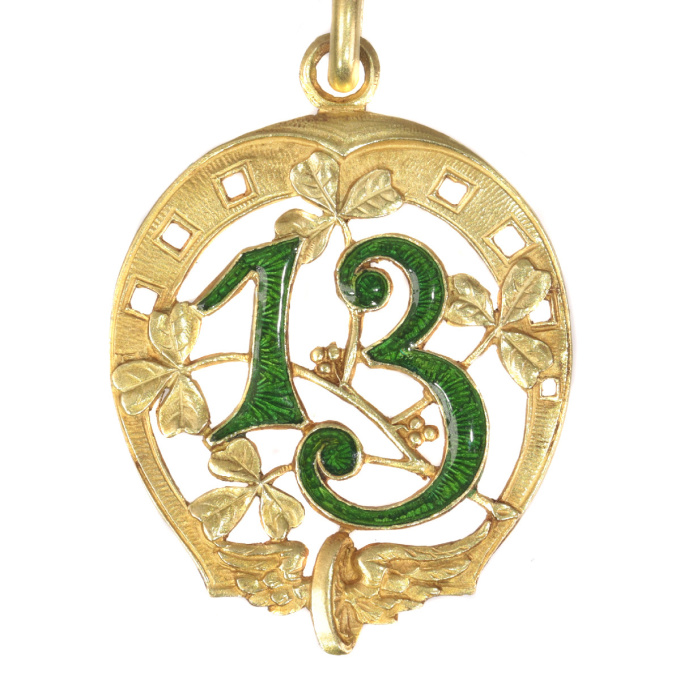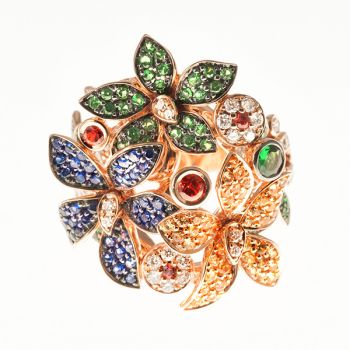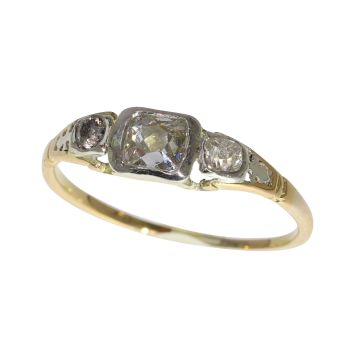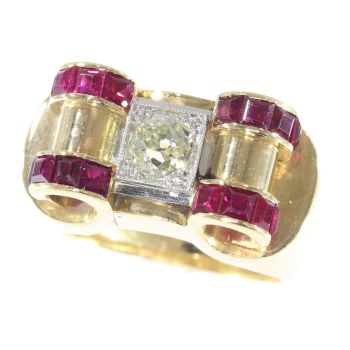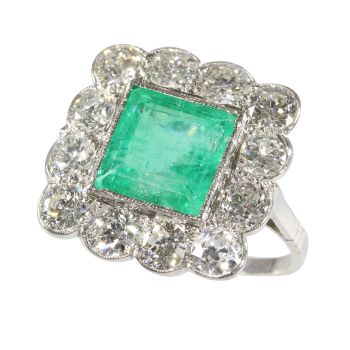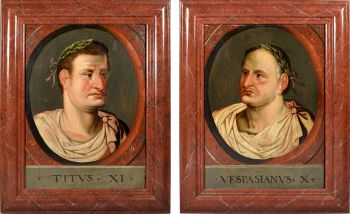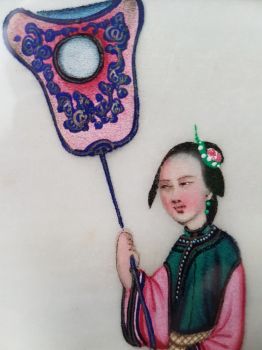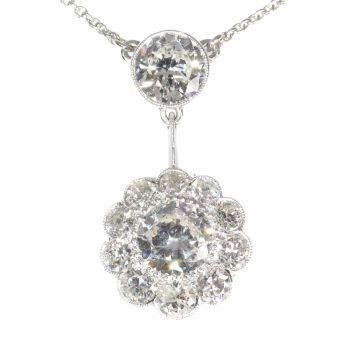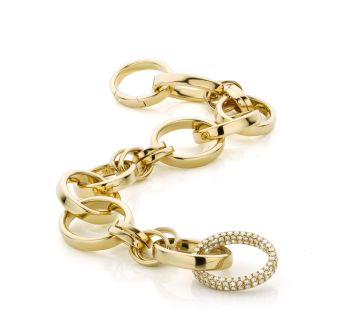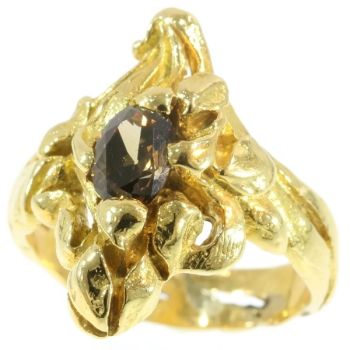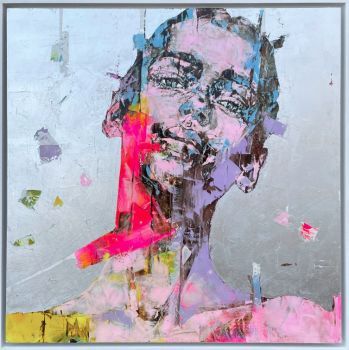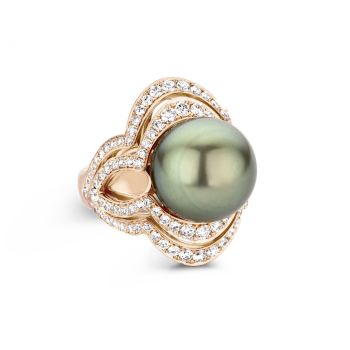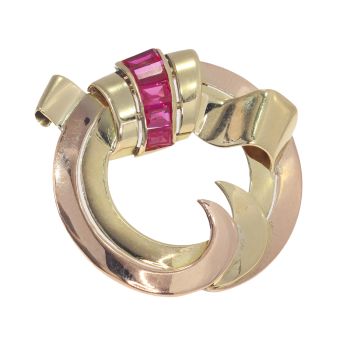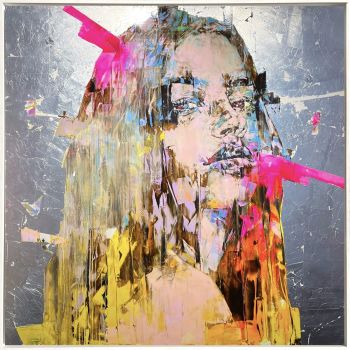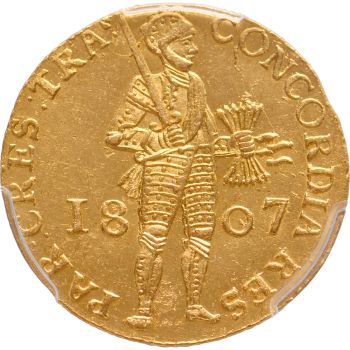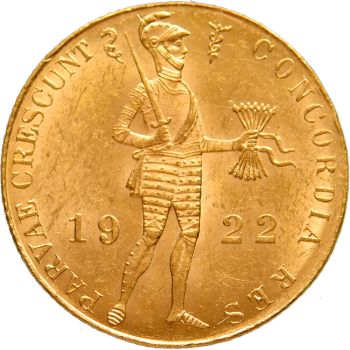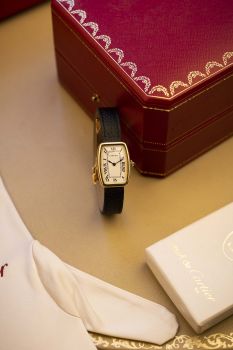Amuleto da sorte em ouro antigo esmaltado com roda de 13 asas e trevo 1900
Artista Desconhecido
OuroEsmalte
Atualmente indisponível via Gallerease
- Sobre arte
Antique jewelry object group: pendant
Condition: very good condition
- (more info on our condition scale)
Country of origin:Although it does not carry any legible control marks we believe this to be of Belgian origin.
Style: Late-Victorian - Victorian decorative arts refers to the style of decorative arts during the Victorian era. The Victorian era is known for its eclectic revival and interpretation of historic styles and the introduction of cross-cultural influences from the middle east and Asia in furniture, fittings, and Interior decoration.
Victorian design is widely viewed as having indulged in a regrettable excess of ornament. The Arts and Crafts movement, the aesthetic movement, Anglo-Japanese style, and Art Nouveau style have their beginnings in the late Victorian era.
- See also: late-Victorianor more info on styles
Style specifics: Late Victorian / early Art Nouveau - The subject of this piece, although typical 19th Century, announces the coming of the Art Nouveau style.
Period: ca. 1900
- (events & facts of this era, poetry of this era, fashion of this era)
Source of inspiration: Good luck tokens
Theme: various luck bringing symbols (see further in this text)
Material: 18K yellow gold (touchstone tested)
- (more info on precious metals)
Technique: Enamelling is an old and widely-adopted technology. The ancient Egyptians applied enamels to pottery and stone objects. The ancient Greeks, Celts, Russians, and Chinese also used enameling processes on metal objects. Enamel is the colorful result offusing powdered glass to a substrate by firing, usually between 750 and 850 degrees Celsius. The powder melts and flows and hardens to a smooth, durable vitreous coating on metal, glass or ceramic. According to some sources, the word enamel comes fromthe High German word smelzan (to smelt) via the Old French esmail. Used as a noun, "an enamel" is a usually small decorative object, coated with enamel coating, such as a champlevé or a cloisonné (different techniques).
Extra information on the symbolism in this pendant:
Winged wheel - The wheel has been associated with technology since time immemorial. When it acquires wings its significance increases greatly. The idea of motion is amplified to an extreme degree: as fast as a bird can fly, and that to the AncientGreeks and Romans, was the ultimate in speed. The "winged wheel" is seen most often in connection with Athena but also frequently with Mercury. The wheel with wings is, in a sense, a "spinning" or moving wheel. Together with Mercury, by itself or with other figures, it is the most common symbol for communication and/or transport. (From Google)
Horse shoe - There is no consensus among historians as to when and by who horseshoes were first invented. What seems most plausible is that shoeing was invented by numerous armorers in different places at about the same time, and then kept as a military secret for a very short time - until the practice was apparently widespread. Fact is that to date they are considered to bring good-luck.
Three leaf clover or Shamrock - The shamrock was traditionally used for its medical properties and was a popular motif in Victorian times. According to what the Oxford English Dictionary calls "a late tradition" (first recorded in 1726), the plant wasused by Saint Patrick to illustrate the doctrine of the Trinity. However, the posthumous timing of this legend (coming some 1,200 years after his death), and the lack of supporting evidence found in St. Patrick's writings have caused some to question its authenticity.
Lucky number 13 - click here for an explanation on number 13.
Hallmarks: No trace.
- (more info on hallmarks)
Dimensions: height 3,45 cm (1,36 inch) - See picture with a ruler in cm and inches
Weight: 3,30 gram (2,12 dwt)
Reference Nº: 19254-0122
Copyright photography: Adin, fine antique jewelry
- Sobre artista
Pode acontecer que um artista ou criador seja desconhecido.
Algumas obras não devem ser determinadas por quem são feitas ou são feitas por (um grupo de) artesãos. Exemplos são estátuas dos tempos antigos, móveis, espelhos ou assinaturas que não são claras ou legíveis, mas também algumas obras não são assinadas.
Além disso, você pode encontrar a seguinte descrição:
•"Atribuído a …." Na opinião deles, provavelmente uma obra do artista, pelo menos em parte
• “Estúdio de…” ou “Oficina de” Em sua opinião um trabalho executado no estúdio ou oficina do artista, possivelmente sob sua supervisão
• "Círculo de ..." Na opinião deles, uma obra da época do artista mostrando sua influência, intimamente associada ao artista, mas não necessariamente seu aluno
•“Estilo de…” ou “Seguidor de…” Na opinião deles, um trabalho executado no estilo do artista, mas não necessariamente por um aluno; pode ser contemporâneo ou quase contemporâneo
• "Maneira de ..." Na opinião deles, uma obra no estilo do artista, mas de data posterior
•"Depois …." Na opinião deles uma cópia (de qualquer data) de uma obra do artista
• “Assinado…”, “Datado…” ou “Inscrito” Na opinião deles, a obra foi assinada/datada/inscrita pelo artista. A adição de um ponto de interrogação indica um elemento de dúvida
• "Com assinatura ….”, “Com data ….”, “Com inscrição ….” ou “Tem assinatura/data/inscrição” na opinião deles a assinatura/data/inscrição foi adicionada por outra pessoa que não o artista
Related artworks
- 1 - 4 / 12
- 1 - 4 / 24
- 1 - 4 / 24

